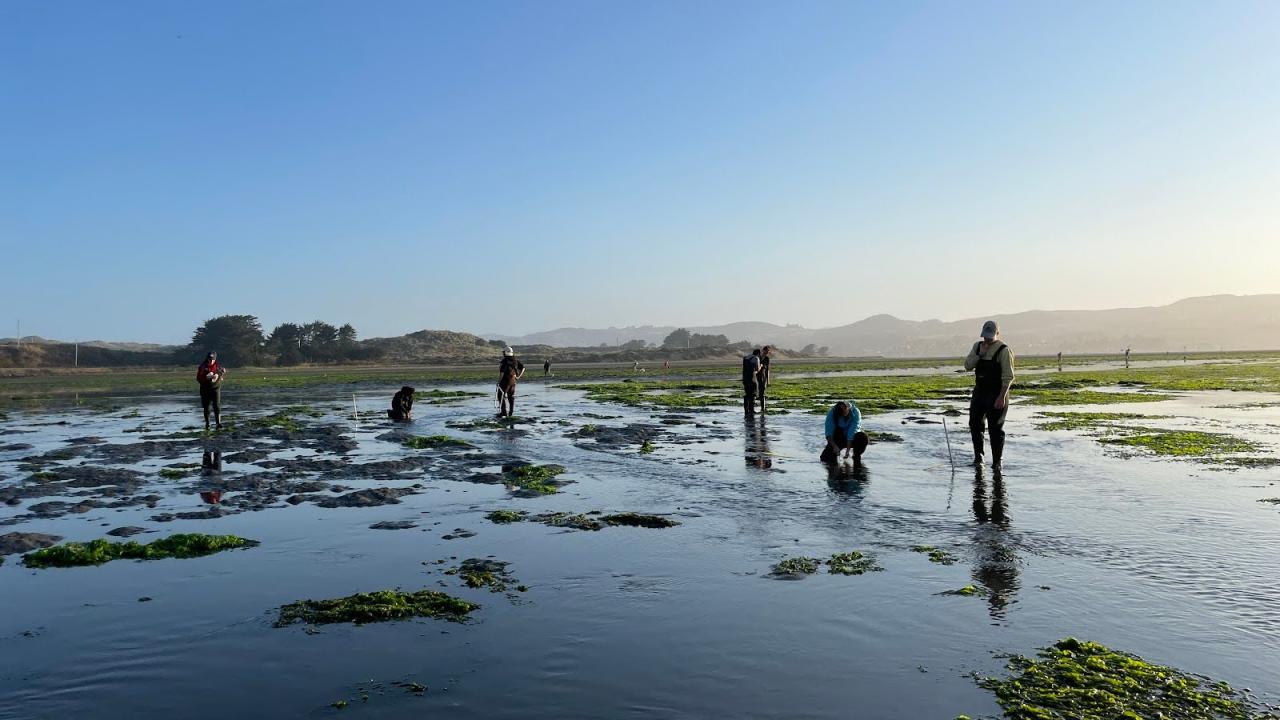
Exploring Eelgrass and Expanding Horizons
An SRJC-BML Internship Story
My name is Angelina, and I just completed my third year at SRJC as a biology major. In this upcoming fall quarter, I am transferring to UC Davis to major in Neurobiology, Physiology, and Behavior.

Over this summer I had the privilege of working in the Brown lab under my mentor, Amy Briggs Ph.D., who is a postdoctoral research fellow in the Center for Population Biology at UC Davis. In the Brown lab, I worked as part of experiments and field surveys that focused on the prevalence and transmission of eelgrass wasting disease.
Eelgrass is a marine plant that is found along the east and west coast of the United States, and it is a vital habitat building species, supporting many other marine organisms. As a key species that supports lots of other marine life, it is crucial to study the wasting disease that is threatening its health, so that we understand how it is transmitted and to prevent further spread of disease and die offs in the future.
This wasting disease is caused by the slime mold Labyrinthula zosterae, which infects the plant and causes dark lesions to spread over the blades of the grass, resulting in the cease of photosynthesis and ultimately death of the plant.
As we researched this wasting disease, I was able to be involved in the experiments by preparing experimental equipment and helping with monitoring and upkeep. In an experiment led by a UC Davis student who was also working with Amy, it was designed to study the path and rate of transmission of eelgrass wasting disease from diseased to healthy plants. The experimental set up consisted of 24 buckets that had two plants in each, which were collected from field sites and planted in experimental planters. In half of the buckets, there was a barrier placed between the plants so that there couldn’t be any contact of the blades in the water, and the remaining half had no barrier, allowing them to be in contact. This allowed us to study the rate at which the disease spread through water versus spreading via contact. For two weeks, each plant was monitored and processed daily to check for growth, health, presence/severity of disease, etc. From this data collected, it was determined that in the buckets with diseased and healthy plants, those with the barrier separating them had roughly the same rate of transmission as those without the barrier. This is evidence that the primary mode of transmission is through water flow.

Aside from preparing/working with Amy and Ally on their experiments, I also got to attend a couple field surveys out at bodega sites. On survey mornings, I and other members of the Brown lab would wake up before the sun rose and drive over to meet at BML. Together, we’d drive to the field sites, put on our waders, and trudge out through the mud to get to the collection sites in the eelgrass beds. Along 20 meter transects, disease density data and water samples would be collected, as well as third rank leaves collected every meter, and entire plants every fourth meter, which we’d take back to the lab and process. During this processing, we’d clean off the leaves, note their length and if they were diseased, and scan them to an AI system that would calculate the area of diseased tissue on the blades. The plants went through the same process, but we’d also collect data on their length, sheath length, number of leaves, etc. All of this data was used in another graduate student’s experiment within the Brown lab, and it was really cool to be able to see the other research that also focused on eelgrass at BML.
I am so grateful for this experience, and I know that it will help me in other research/lab experiences to come. As a student in biological sciences, I have many other labs in my future, and I hope to be involved in more internships once I transfer. Although I am on a pre-med track, this internship has opened me up to the world of research, and now I know that can be a possibility in my future career.
About the Program:
The SRJC-BML Internship Program provides summer research opportunities for Santa Rosa Junior College students at the Bodega Marine Laboratory.
